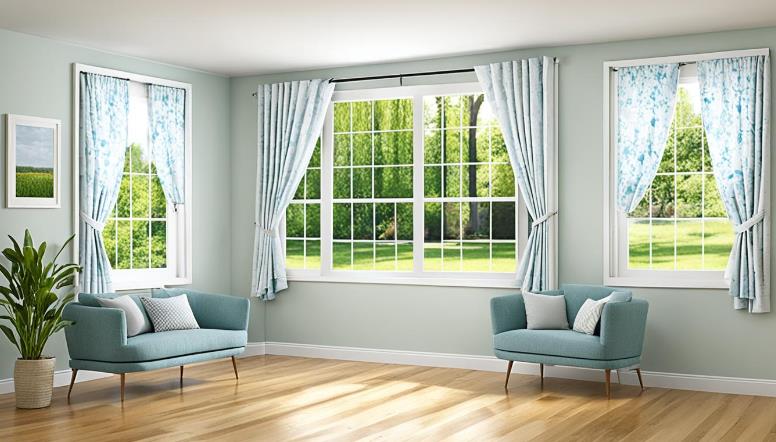The summer heat can be relentless, making it difficult to find how to cool down a room without ac, especially if you don’t have money to afford air conditioning. But what if there were alternative ways to cool down a room without relying on AC? What if you could beat the heat and create a refreshingly cooler space using natural methods?
Well, you’re in luck! In this article, we will share six effective tips and tricks that will help you cool down a room without AC. These methods, when implemented correctly, can transform your space into a comfortable oasis, even on the hottest days.
So, get ready to discover these ingenious strategies and unlock the secrets to a cooler room without AC. Are you ready to embrace the challenge and explore unconventional cooling techniques?
How to Cool Down a Room Without AC
1. Utilize a Fan
Using a fan can help circulate air and create a cooling breeze, making the room feel cooler. Place the fan near a window to draw in cooler air from outside, or use it to create cross-ventilation by opening windows on opposite sides of the room.

Place Ice or Cool Water in Front of a Fan
Fans are a great tool for cooling down a room without AC. They help circulate the air and create a breeze, providing relief from the heat. One effective technique is to place a bowl of ice or cool water in front of the fan. As the air blows over the ice or cool water, it creates a cooling effect, helping to reduce the temperature in the room.
Additionally, using ceiling fans in conjunction with other fans can further enhance airflow and cooling. Ceiling fans should rotate counterclockwise in the summer to create a downdraft, which creates a wind-chill effect that makes the room feel cooler. Using fans strategically, such as placing them near windows or in the path of natural breezes, can also help increase their effectiveness in cooling down a room without AC.
2. Promote Cross-Ventilation
Cross-ventilation cools a room by creating a breeze through strategically opened windows on opposite sides, allowing hot air to escape and cool air to enter. Windows are essential as they act as entry and exit points for airflow, promoting a continuous exchange of air. Using window or exhaust fans enhances this effect by pulling hot air out and boosting airflow. For maximum benefit, utilize cross-ventilation during cooler parts of the day and align window openings with the prevailing wind direction. This method effectively lowers the room temperature and creates a more comfortable environment.
To further improve cross-ventilation, consider using a window fan or exhaust fan to help draw air through the room. These fans can increase airflow and enhance the cooling effect by expelling hot air more efficiently. Additionally, using window treatments such as blinds or curtains can help control the amount of sunlight entering the room, reducing heat buildup and making cross-ventilation even more effective.
3. Fix Indoor Plants
Certain indoor plants release moisture through transpiration, cooling the air and increasing humidity for a more comfortable environment. Plants like Boston Fern, Peace Lily, and Snake Plant are known for their natural cooling effect. Place them strategically around the room, especially near windows, for maximum cooling benefits. Indoor plants also improve air quality and have mood-boosting benefits.

4. Apply Solar Films
Solar films are an effective way to cool down a room without air conditioning. They reduce solar heat gain by up to 65%, making the indoor environment more comfortable. Solar films also block sunlight, reducing glare and protecting furniture from fading. They are cost-effective, eco-friendly, and improve energy efficiency by reducing the need for artificial cooling methods.
5. Close the Curtains
Closing curtains or blinds during the hottest parts of the day can cool down a room by blocking sunlight, a major heat source. Thermal or blackout curtains provide even greater heat reduction and insulation. Look for curtains with insulating properties and a tight weave, and consider light colors to reflect sunlight. Close curtains or blinds as close to the window as possible for maximum coverage.
6. Upgrade All of Your Incandescent, Fluorescent, and Other Light Bulbs to LED
Upgrading to LED bulbs can cool down a room without AC by reducing heat emission. LED bulbs produce less heat compared to traditional bulbs, contributing to a cooler room temperature. They are also energy-efficient, helping to save on electricity bills and create a more sustainable lighting solution. Switching to LED bulbs can enhance your comfort and reduce the overall heat load in your home.
In addition to switching to LED bulbs, using lamps and other light fixtures sparingly can also help reduce heat emission in a room. Opting for natural lighting during the day and turning off unnecessary lights can further minimize heat buildup. Combining these strategies with other cooling methods, such as cross-ventilation and fans, can create a more comfortable indoor environment without the need for air conditioning.
Any Alternatives to AC and Fans?
- Evaporative Coolers (Swamp Coolers): Utilize the principle of evaporative cooling, adding moisture to the air while reducing room temperature; particularly effective in dry climates.
- Ice Fan: Place a block of ice in front of a fan to create a cooler breeze; budget-friendly solution for temporary relief from heat, especially in smaller spaces.
- Maximize Window Ventilation: Open windows strategically to create a cross breeze, allowing fresh air to circulate and dissipate heat; use window deflectors or adjustable screens to control airflow direction.
FAQs on Cool Down Room Without AC
How can I promote cross-ventilation to cool down a room?
To promote cross-ventilation, strategically open windows on opposite sides of the room or house. This allows hot air to escape and cool air to enter, creating a breeze that helps lower the overall temperature in the room.
How can I cool down a room quickly?
To cool down a room quickly, you can use a combination of methods, such as using fans, opening windows, and closing curtains to block out sunlight.
Should I use a dehumidifier to cool down a room?
Yes, a dehumidifier can help reduce humidity levels, which can make a room feel cooler. However, it doesn’t lower the temperature, so it’s best used in combination with other cooling methods.

